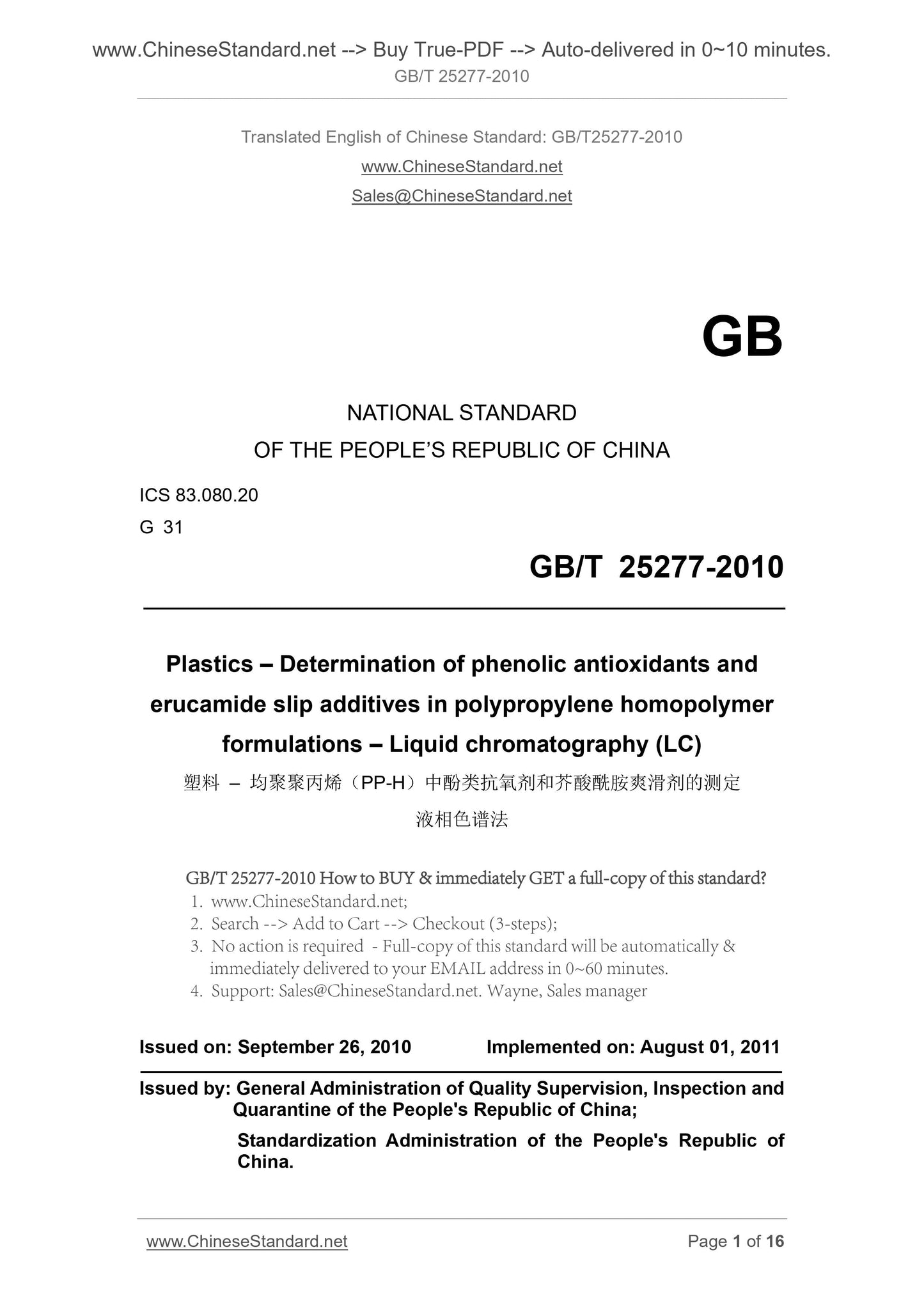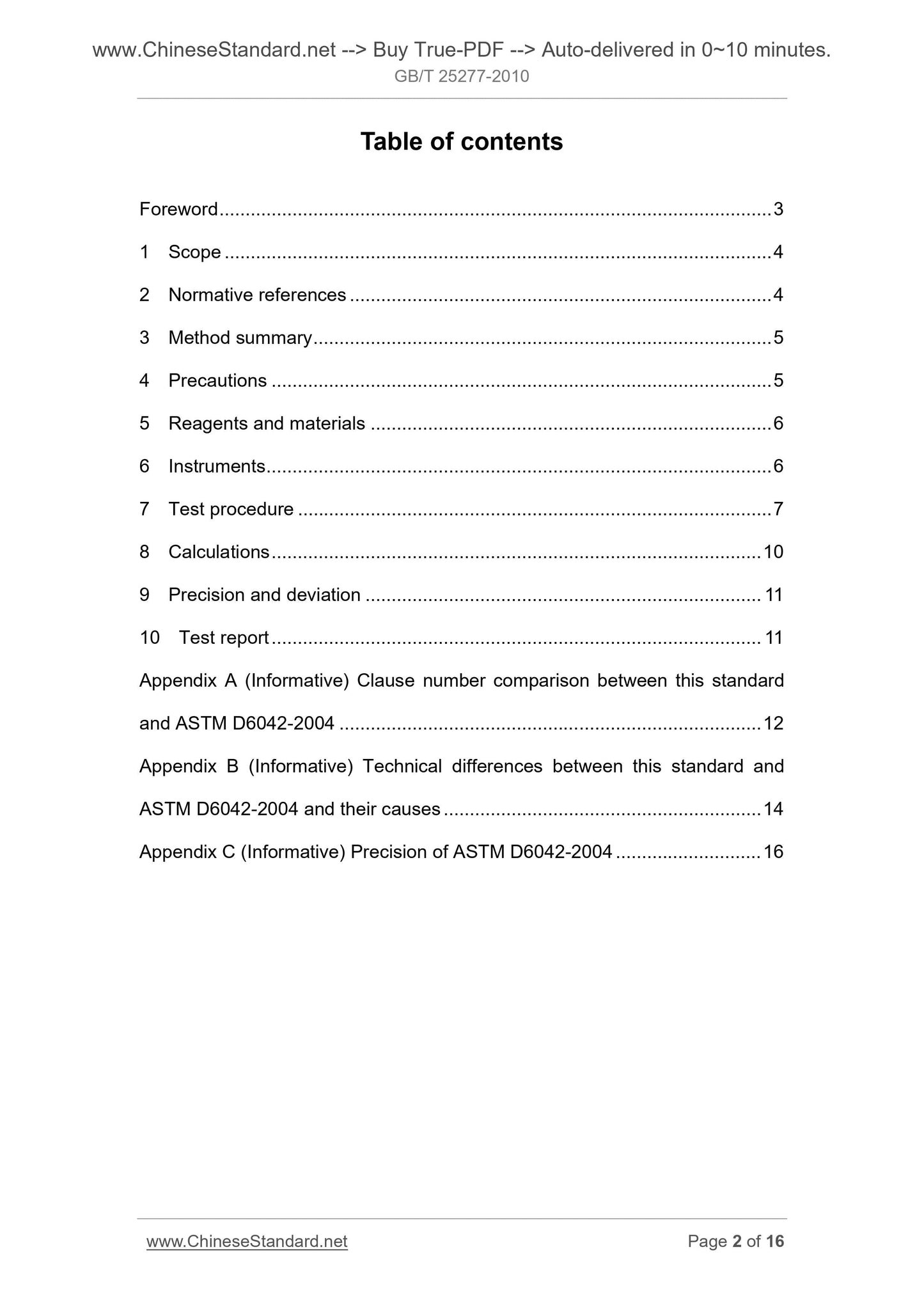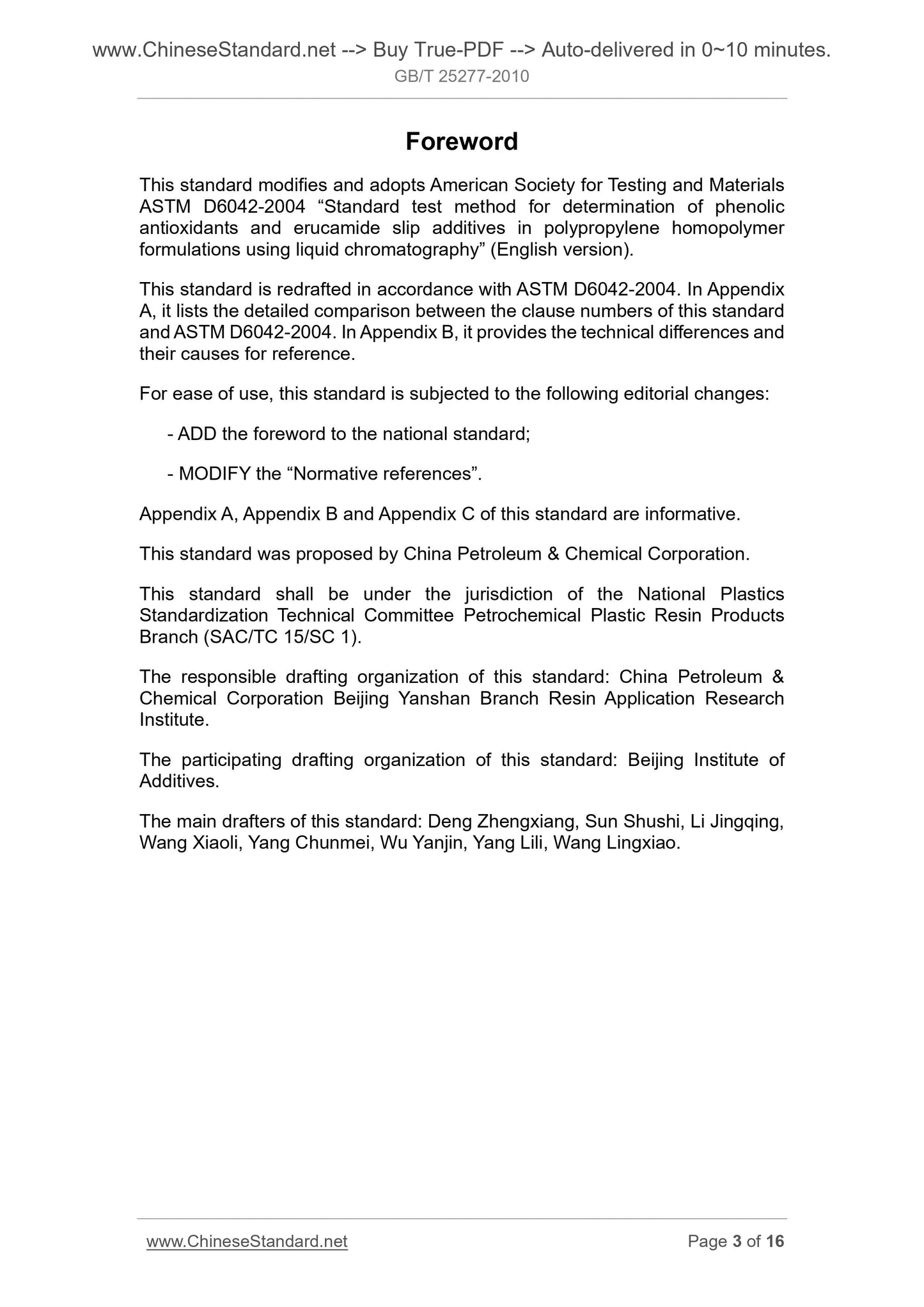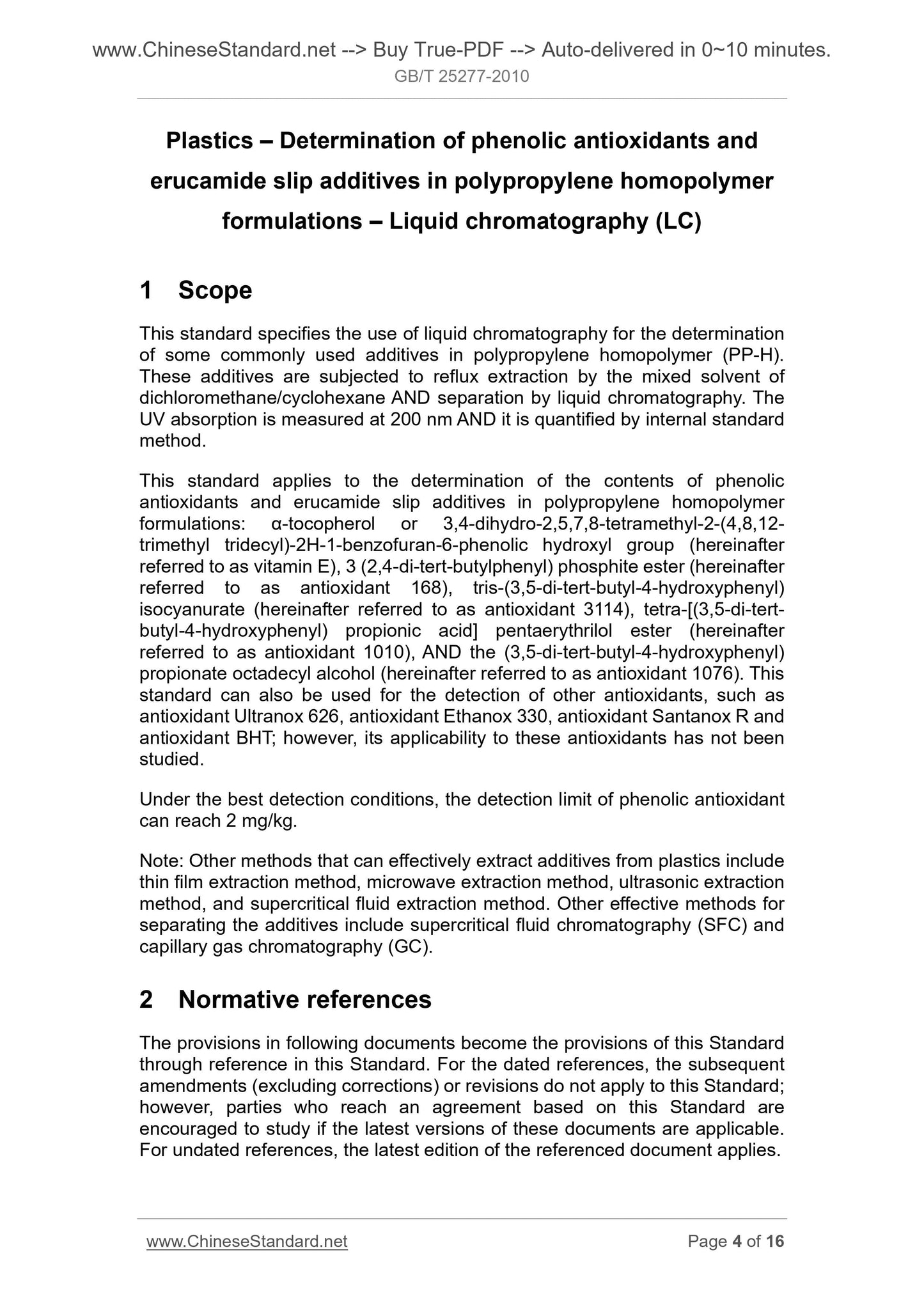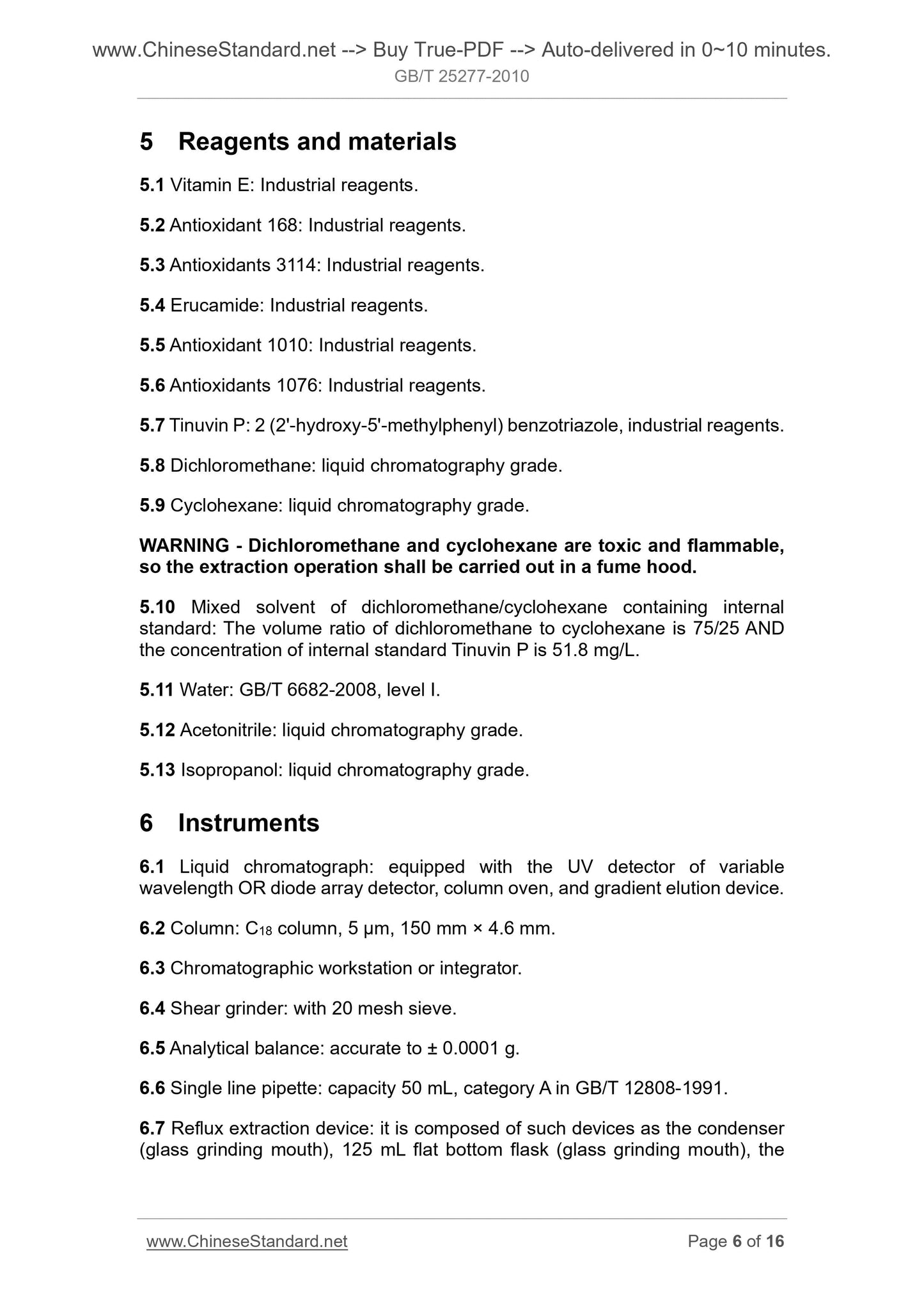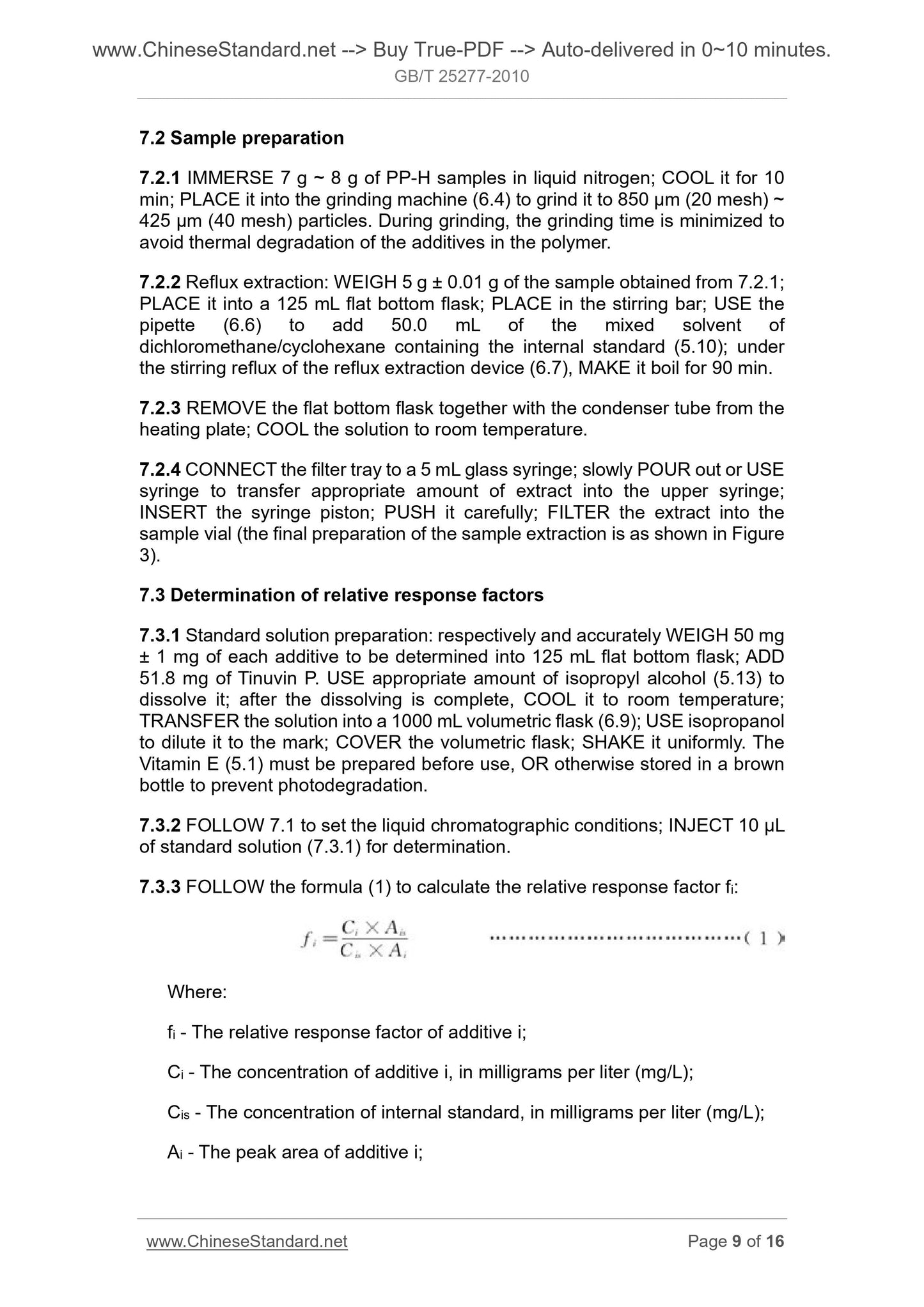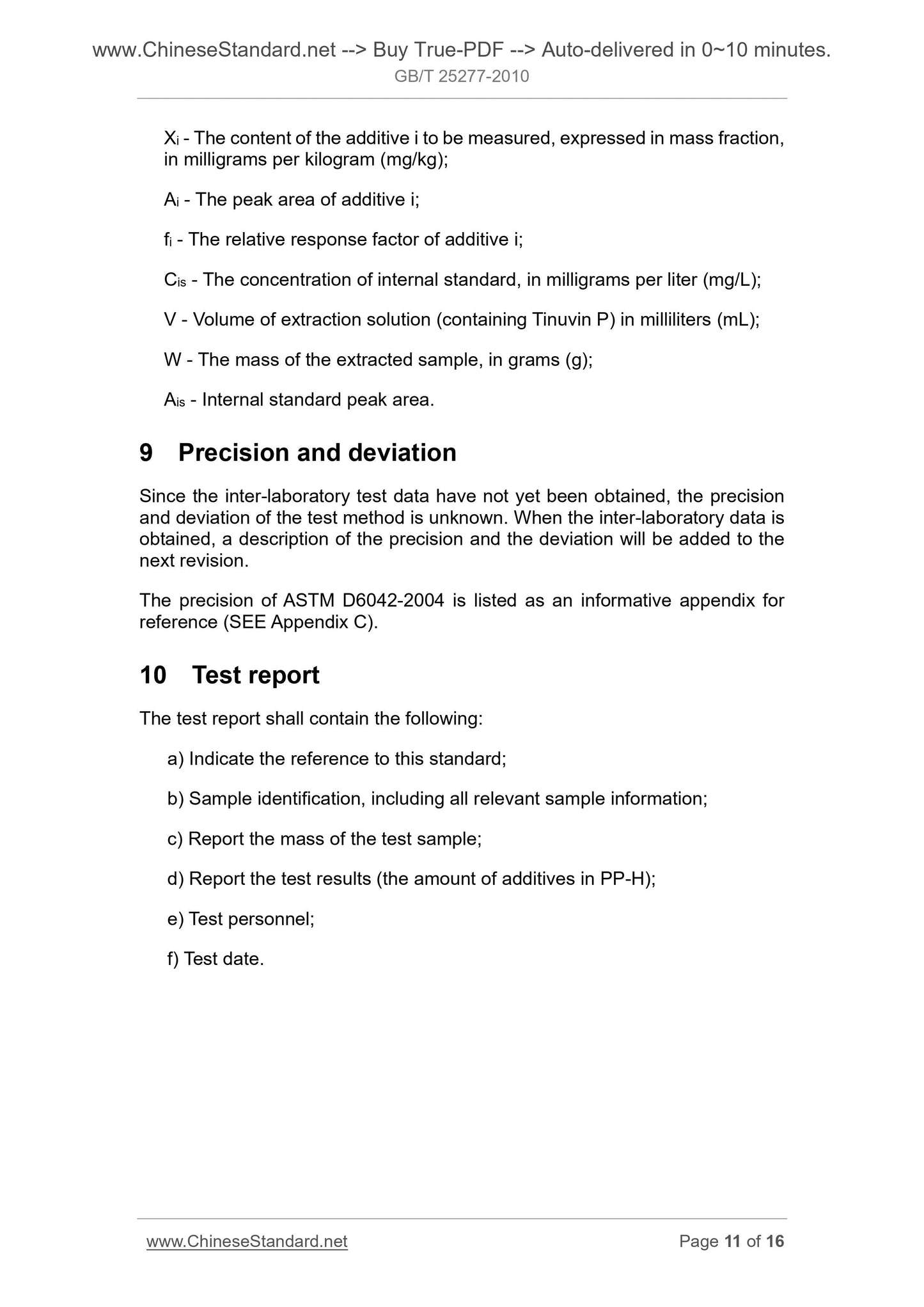1
/
of
7
www.ChineseStandard.us -- Field Test Asia Pte. Ltd.
GB/T 25277-2010 English PDF (GB/T25277-2010)
GB/T 25277-2010 English PDF (GB/T25277-2010)
Regular price
$75.00
Regular price
Sale price
$75.00
Unit price
/
per
Shipping calculated at checkout.
Couldn't load pickup availability
GB/T 25277-2010: Plastics -- Determination of phenolic antioxidants and erucamide slip additives in polypropylene homopolymer formulations -- Liquid chromatography (LC)
Delivery: 9 seconds. Download (and Email) true-PDF + Invoice.Get Quotation: Click GB/T 25277-2010 (Self-service in 1-minute)
Newer / historical versions: GB/T 25277-2010
Preview True-PDF
Scope
This standard specifies the use of liquid chromatography for the determinationof some commonly used additives in polypropylene homopolymer (PP-H).
These additives are subjected to reflux extraction by the mixed solvent of
dichloromethane/cyclohexane AND separation by liquid chromatography. The
UV absorption is measured at 200 nm AND it is quantified by internal standard
method.
This standard applies to the determination of the contents of phenolic
antioxidants and erucamide slip additives in polypropylene homopolymer
formulations. α-tocopherol or 3,4-dihydro-2,5,7,8-tetramethyl-2-(4,8,12-
trimethyl tridecyl)-2H-1-benzofuran-6-phenolic hydroxyl group (hereinafter
referred to as vitamin E), 3 (2,4-di-tert-butylphenyl) phosphite ester (hereinafter
referred to as antioxidant 168), tris-(3,5-di-tert-butyl-4-hydroxyphenyl)
isocyanurate (hereinafter referred to as antioxidant 3114), tetra-[(3,5-di-tert-
butyl-4-hydroxyphenyl) propionic acid] pentaerythrilol ester (hereinafter
referred to as antioxidant 1010), AND the (3,5-di-tert-butyl-4-hydroxyphenyl)
propionate octadecyl alcohol (hereinafter referred to as antioxidant 1076). This
standard can also be used for the detection of other antioxidants, such as
antioxidant Ultranox 626, antioxidant Ethanox 330, antioxidant Santanox R and
antioxidant BHT; however, its applicability to these antioxidants has not been
studied.
Under the best detection conditions, the detection limit of phenolic antioxidant
can reach 2 mg/kg.
Note. Other methods that can effectively extract additives from plastics include
thin film extraction method, microwave extraction method, ultrasonic extraction
method, and supercritical fluid extraction method. Other effective methods for
separating the additives include supercritical fluid chromatography (SFC) and
capillary gas chromatography (GC).
Basic Data
| Standard ID | GB/T 25277-2010 (GB/T25277-2010) |
| Description (Translated English) | Plastics -- Determination of phenolic antioxidants and erucamide slip additives in polypropylene homopolymer formulations -- Liquid chromatography (LC) |
| Sector / Industry | National Standard (Recommended) |
| Classification of Chinese Standard | G31 |
| Classification of International Standard | 83.080.20 |
| Word Count Estimation | 13,160 |
| Date of Issue | 2010-09-26 |
| Date of Implementation | 2011-08-01 |
| Quoted Standard | GB/T 6682-2008; GB/T 12806-1991; GB/T 12808-1991 |
| Adopted Standard | ASTM D6042-2004, MOD |
| Regulation (derived from) | National Standard Approval Announcement 2010 No.6 (Total No.161) |
| Issuing agency(ies) | General Administration of Quality Supervision, Inspection and Quarantine of the People's Republic of China, Standardization Administration of the People's Republic of China |
| Summary | This standard specifies the determination by liquid chromatography homopolymer polypropylene (PP-H) in some of the commonly used additives. These additives are used dicyanoethyl methane/cyclohexane mixed solvent extraction after reflow with liquid chromatography, UV absorption was measured at 200nm wavelength, using the standard method. This standard applies to polypropylene homopolymer erucic acid amide slip agent and phenolic antioxidants, ��- tocopherol or 3, 4-dihydro -2, 5, 7, 8-tetramethyl-2-(4, 8, 12-trimethyl- tridecyl)-2H-1- phenyl well furosemide whistle -6-tocopherol acetate (hereinafter referred to as Vit E), tris (2, 4-di-tert -butylphenyl) phosphate (hereinafter referred to as antioxidant 168), tris (3, 5 di-t -butyl bucket hydroxyphenyl) isocyanurate (hereinafter referred to as antioxidant 3114), tetrakis [ (3, 5-di-tert -butyl -4-hydroxyphenyl) propionate] IS (hereinafter referred to as antioxidant 1010) and [ (3, 5 di-tert -butyl-4-hydroxyphenyl) propionic acid n- octadecanol ester (hereinafter referred to as antioxidant agent 1076) Determination of, this standard can also be used to detect other antioxidants, such as antioxidants Ultranox 626, antioxidants Ethanox 330, antioxidants Santanox R and antioxidant BHT, but for these antioxidants applicability not done research under optimal testing conditions, phenolic antioxidants detection limits can be achieved 2mg/kg, Note: to be effective in the extraction of additives from the plastic out of the other methods, including film Ping emulated, microwave extraction law, ultrasonic extraction and supercritical fluid Ping emulated. |
Share
